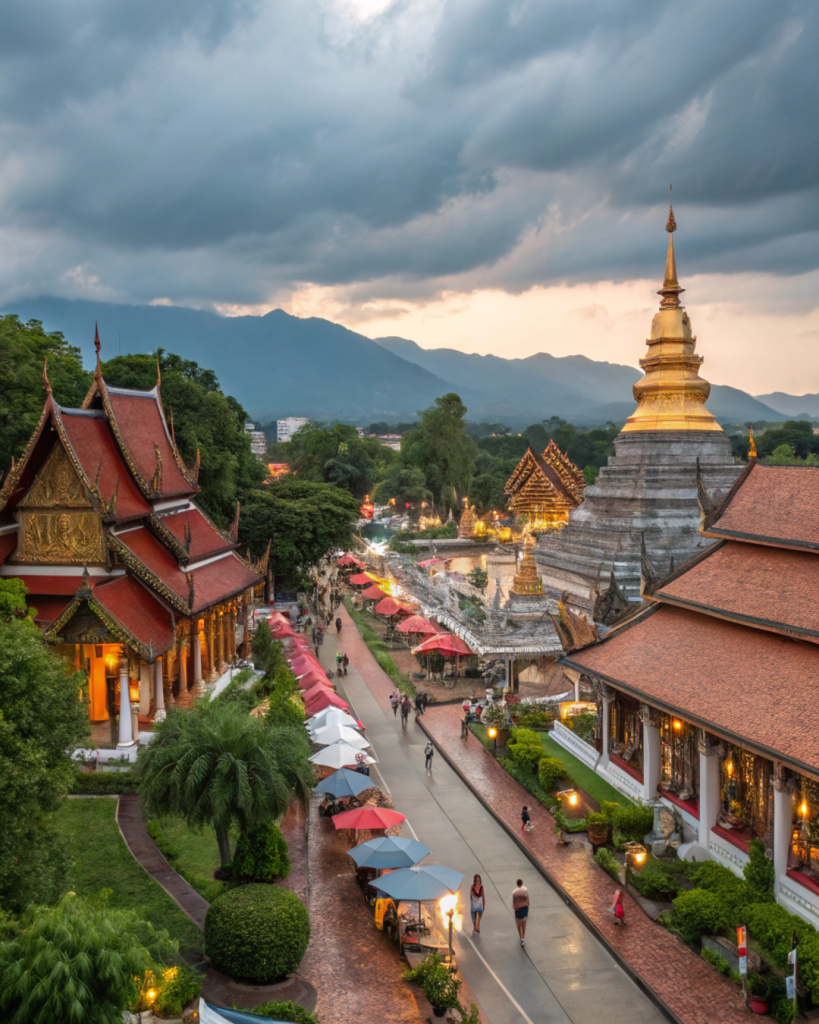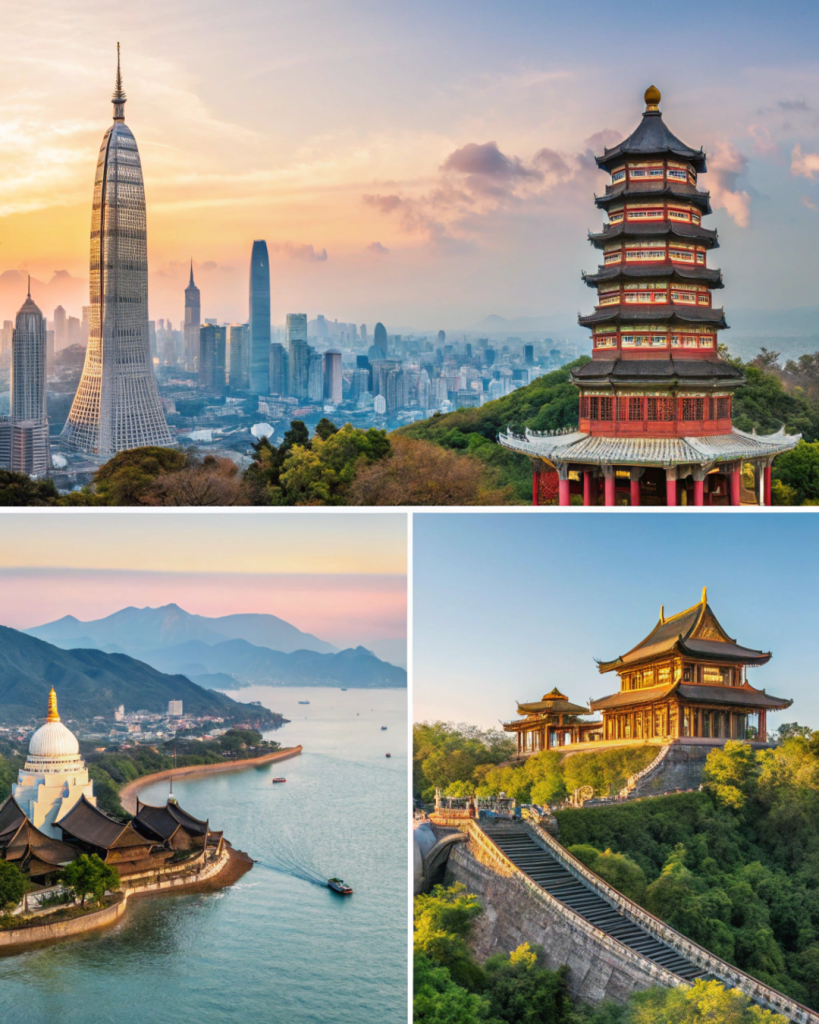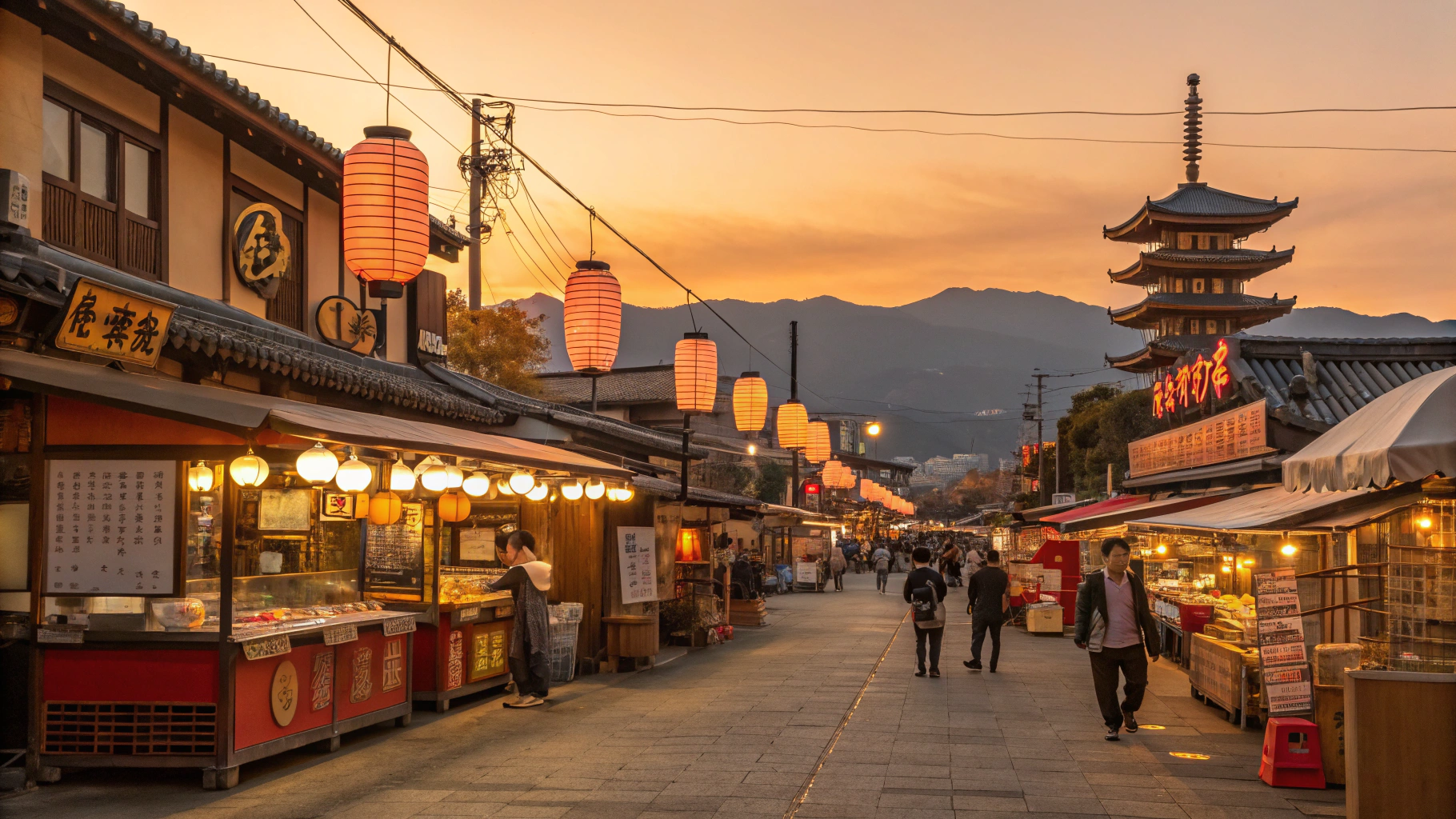As the morning sun filtered through the bamboo curtains of my Hanoi hotel room, I sipped Vietnamese coffee and reflected on how different travel had become. Just a few years ago, QR codes, testing requirements, and ever-changing entry protocols dominated travel planning.
Today, Asia has largely reopened its doors, though with varying degrees of accessibility and new procedures that have become the norm for international travelers.
I’ve spent the last three months exploring Asia’s reopened frontiers, from the neon-lit streets of Tokyo to the serene beaches of Bali. The continent’s tourism renaissance is in full swing, yet each country has its own approach to welcoming visitors back.
Some have flung their doors wide open while others maintain certain precautions, creating a patchwork of possibilities for eager travelers.
Current Status of Asian Countries Open for Tourism
The landscape of Asian travel has dramatically shifted since the global disruptions of recent years. Most Asian countries have now reopened for tourism, though with varying requirements. Here’s the current status of major destinations as of April 2025:
Fully Open with Minimal Requirements
These countries have essentially returned to pre-pandemic entry procedures, requiring just a normal visa (where applicable) with no additional health documentation:
- Thailand: The Land of Smiles was among the first to fully reopen and has maintained its welcoming stance. The country now operates with no testing or vaccination requirements.
- Vietnam: After initially implementing a phased reopening, Vietnam has fully embraced tourism again, with visa policies similar to pre-2020 standards.
- Singapore: The island nation has leveraged its technological infrastructure to create seamless entry processes while maintaining some digital health declarations.
- Malaysia: Offering everything from urban experiences in Kuala Lumpur to the natural wonders of Borneo, Malaysia has eliminated special entry requirements.
- Indonesia: Bali and beyond are fully accessible, with the country focusing on sustainable tourism initiatives rather than entry restrictions.
- Philippines: The archipelago has fully reopened, emphasizing its island destinations and natural attractions.
Open with Some Requirements
These destinations welcome tourists but maintain certain precautions:
- Japan: After a carefully managed reopening process, Japan now accepts independent travelers with minimal requirements, though some attractions still implement capacity limits during peak seasons.
- South Korea: Open to visitors with standard visa procedures, though some large events may require additional registration.
- Taiwan: Has removed most restrictions but maintains a streamlined health monitoring system for arrivals.
- India: Open for tourism with standard e-visa requirements and occasional region-specific advisories.
When to Visit: Seasonal Considerations Across Asia

Timing your Asian adventure can dramatically impact your experience. The continent’s vast geographical spread means weather patterns vary significantly between regions.
Southeast Asia (Thailand, Vietnam, Malaysia, Indonesia)
The classic advice for Southeast Asia holds true: November to February offers the most pleasant conditions across most countries, with lower humidity and minimal rainfall. However, this coincides with peak tourism season, so expect higher prices and more crowds.
I visited Vietnam last January and found it ideal – cool enough in Hanoi to explore comfortably by day while still warm enough for beach time in Central Vietnam and the South.
For budget travelers, consider the “shoulder seasons” of September-October or March-April. You’ll encounter some rain showers but benefit from fewer crowds and better deals. I’ve found these periods particularly rewarding in Thailand, where afternoon downpours quickly give way to clear evenings.
East Asia (Japan, South Korea, Taiwan)
Unlike Southeast Asia, East Asian destinations often shine brightest in spring and fall:
- Spring (March-May): Cherry blossom season in Japan (late March to early April) is magical but extremely crowded. Korea’s bloom follows shortly after. Temperatures are mild and comfortable.
- Fall (September-November): My personal favorite for this region. The autumn foliage creates spectacular landscapes, especially in Japan’s mountain regions and South Korea’s national parks, while temperatures remain pleasant.
- Winter (December-February): Cold but rewarding for those interested in winter sports, particularly in Japan’s northern regions and South Korea’s mountain resorts.
South Asia (India, Sri Lanka)
The diversity of India makes it a year-round destination if you choose your regions wisely:
- October to March: The best time for most of India, with comfortable temperatures across the north and central regions.
- December to February: Ideal for southern India and Sri Lanka, when the weather is dry and less scorching.
- June to September: The monsoon season affects most of the subcontinent, though the northeastern states can be beautiful during this period.
Getting There: Transportation Insights
Air Travel
Major Asian hubs have reestablished strong international connections. Singapore’s Changi, Bangkok’s Suvarnabhumi, Tokyo’s Narita and Haneda, and Seoul’s Incheon airports offer excellent connectivity to global destinations.
In my experience, considering these strategic entry points can save both time and money:
- Bangkok remains one of the most economical gateways to Southeast Asia, with extensive connections to regional destinations.
- Singapore offers exceptional efficiency and connectivity, though often at higher prices.
- Kuala Lumpur has emerged as a value-oriented alternative, with AirAsia’s extensive network making it an excellent hub for budget travelers.
- Seoul and Tokyo provide the best entry points for East Asian exploration, with Tokyo often offering more competitive fares from North America and Europe.
Regional Transportation
Once in Asia, transportation between countries has largely normalized:
- Low-cost carriers like AirAsia, Scoot, and VietJet have resumed extensive regional networks, making multi-country itineraries affordable.
- Train services between certain countries have improved, with notable investments in connectivity between Thailand, Malaysia, and Singapore.
- Land crossings between Southeast Asian nations have reopened, though procedures at some borders remain lengthier than air travel alternatives.
Cost Considerations: Budgeting for Different Asian Regions

Asia continues to offer tremendous value compared to Western destinations, though with significant variation between countries.
Budget-Friendly Destinations (Under $50/day)
- Vietnam: Still one of Asia’s best values, with comfortable accommodations from $15-30, street food meals for $2-4, and affordable transportation.
- Indonesia (outside Bali): Regions like Java and Sumatra offer authentic experiences at prices lower than the popular resort island.
- Northern Thailand: While Bangkok and the islands have become pricier, northern cities like Chiang Mai and Chiang Rai remain affordable.
- Cambodia: Though Angkor Wat has implemented higher entrance fees, daily expenses remain low throughout the country.
Mid-Range Destinations ($50-100/day)
- Thailand’s tourist centers and islands
- Malaysia: Offers excellent value in the mid-range category, with good infrastructure and comfortable accommodations
- Bali: Despite increased popularity, still provides good value in the mid-range market
- Philippines: Popular destinations like Palawan and Boracay fall in this range during high season
Higher-Cost Destinations ($100+/day)
- Japan: While no longer prohibitively expensive due to the weakened yen, still requires a higher budget, particularly in Tokyo and Kyoto
- Singapore: The city-state’s efficiency comes at a price, though food can be affordable at hawker centers
- South Korea: Seoul in particular has seen rising costs, though regional cities offer better value
- Hong Kong: Remains one of Asia’s most expensive destinations
Where to Stay: Accommodation Options Across Asia
The accommodation landscape in Asia has evolved, with new boutique options joining classic guesthouses and luxury resorts. Here’s my breakdown by destination type:
Urban Explorations (Tokyo, Seoul, Singapore)
- Capsule hotels (Japan): Experience this space-efficient innovation for about $30-50/night. Pro tip: Book “first class” capsules for more space.
- Business hotels (South Korea): Clean, efficient rooms near transit hubs like Myeongdong in Seoul (~$70-100/night).
- Heritage shophouses (Singapore): Converted colonial buildings in Chinatown offer unique stays (~$120+).
Beach Destinations (Bali, Phuket, Boracay)
- Eco-resorts: Gili Islands’ newest sustainable bungalows (~$60-150) blend comfort with environmental consciousness.
- Surf camps: Canggu’s community-focused accommodations often include breakfast and board rental (~$25-50 dorm beds).
Cultural Hubs (Kyoto, Hoi An, Luang Prabang)
- Family-run guesthouses: My favorite in Hoi An charges $15/night including bicycle rental and cooking tips from the owners.
- Temple stays: Korea’s ancient monasteries offer unique overnight experiences (from $50 including meals and meditation).
Local Tip: In Bali, “losmen” refers to small family-run inns – often the most authentic and affordable options.
Must-See Places: Asia’s Reopened Highlights
Japan’s Hidden Gems Beyond Tokyo
- Kanazawa’s geisha district rivals Kyoto’s with fewer crowds
- Art islands Naoshima and Teshima showcase stunning contemporary installations
- New Niseko summer activities make this winter destination year-round
Southeast Asia’s Rejuvenated Attractions
- Vietnam’s Hai Van Pass motorcycle route now has safer tour options
- Thailand’s Ayutthaya Historical Park added impressive nighttime illuminations
- Malaysia’s Belum Rainforest offers new eco-tourism packages
Personal Observation: Many popular sites now require online ticket purchases in advance (especially Angkor Wat and Japan’s teamLab museums). I learned this the hard way in Tokyo!
Food Recommendations: Asia’s Culinary Rebirth
Asia’s food scenes have bounced back with exciting developments:
Must-Try Street Food Revivals
- Osaka’s Dotonbori district has reclaimed its 24/7 food stall glory
- Taipei’s Ningxia Night Market added innovative takes on classic snacks
- Penang’s hawker centers now feature QR code ordering systems
New Dining Trends
- Bangkok’s chef’s table experiences (try 80/20 in Chinatown)
- Seoul’s vegan hanwoo (Korean beef) alternatives
- Bali’s zero-waste warungs (local cafes)
Phrase to Know: In Thailand, “Aroy mak” means “very delicious” – a compliment that will earn you extra portions,
Local Tips: Navigating Asia’s Post-Pandemic Travel Scene
After three months exploring reopened Asia, I’ve gathered practical insights that won’t appear in typical guidebooks:
Digital Essentials
- Download country-specific apps before arrival – Singapore’s SingaPass and Japan’s PayPay have become nearly essential for seamless experiences
- Consider an eSIM solution like Airalo for hassle-free connectivity across multiple countries
- Many Asian destinations now use QR-based payment systems extensively – set up a travel-friendly digital wallet before departure
Cultural Navigation
- Temple etiquette has become more structured in Thailand and Japan, with clearer signage but stricter enforcement
- In Vietnam and Indonesia, local tour guides have become more entrepreneurial on platforms like GetYourGuide – worth the investment for authentic experiences
- Morning visits (before 9am) remain the best strategy for popular sites across the region
Transportation Hacks
In my recent travels, I found these transportation insights particularly valuable:
- Korea’s T-Money card now works in parts of Japan through a reciprocal agreement
- Thailand’s Grab service has expanded to include boat transportation in Bangkok
- Malaysia’s improved rail system offers scenic alternatives to flying between major cities
Local Phrase: In Japan, “Sumimasen” (excuse me/sorry) is your most versatile word – it works as an apology, attention-getter, and thank you in casual situations.
Asia’s Emerging Destinations: Beyond the Classics
While established destinations have reopened, some lesser-known locations have developed their tourism infrastructure during the quieter years:
Japan’s Tohoku Region
The northern prefectures have invested in tourism development while maintaining their authenticity. Yamagata’s samurai districts and Akita’s hot springs offer experiences reminiscent of Kyoto twenty years ago, but with fewer visitors.
Central Vietnam
Between the established destinations of Hoi An and Hue lies Lang Co, with its stunning bay and improved accommodations. The Hai Van Pass connecting these areas provides one of Asia’s most scenic drives, especially on the recently upgraded coastal road.
Taiwan’s East Coast
While Taipei has long been on travelers’ radar, Taiwan’s east coast remains relatively undiscovered. The dramatic Taroko Gorge and the laid-back surf town of Dulan offer a perfect contrast to the capital’s energy.
Malaysia’s Borneo
Sabah and Sarawak have developed their ecotourism offerings while preserving critical wildlife habitats. The improved infrastructure makes accessing orangutan sanctuaries and diving sites more straightforward than ever before.
Sustainable Travel Initiatives in Asia
Many Asian destinations have used the tourism restart to implement better sustainability practices:
- Thailand’s Maya Bay (of “The Beach” fame) now limits daily visitors and prohibits boats from entering the bay directly
- Indonesia’s “Clean, Green, and Healthy” program in Bali includes plastic reduction incentives for businesses
- Japan’s rural tourism initiative connects travelers with depopulating villages for authentic cultural exchanges
- Singapore’s Gardens by the Bay now features educational exhibits on climate change and conservation
In my experience, these efforts are most visible in island destinations like Boracay (Philippines) and Gili Trawangan (Indonesia), where fragile ecosystems prompted earlier action.
Planning Multi-Country Itineraries in Asia
With most borders reopened, multi-country trips have resumed as a practical option. Some logical combinations based on geography and transportation links:
Two-Week Southeast Asia Classics
- Thailand + Cambodia (Bangkok → Siem Reap → Phnom Penh → Thai islands)
- Vietnam + Cambodia (Hanoi → Halong Bay → Hoi An → Siem Reap)
- Singapore + Malaysia (Singapore → Melaka → Kuala Lumpur → Penang)
Three-Week East Asia Explorations
- Japan + South Korea (Tokyo → Kyoto → Seoul → Jeju Island)
- Taiwan + Japan (Taipei → Taroko Gorge → Okinawa → Kyushu)
Personal Observation: Multi-country trips work best when allowing at least 3-4 days per location. I’ve found that crossing borders still adds complexity that requires buffer time in your schedule.
Health and Safety Considerations
While travel restrictions have largely lifted, prudent precautions remain advisable:
- Comprehensive travel insurance covering medical evacuation has become standard practice rather than optional
- Many high-end hotels maintain enhanced hygiene protocols that began during the pandemic
- Some popular tourist areas have improved their medical facilities specifically for international visitors
Asia’s Welcoming Renaissance
As I sit in this Hanoi café watching the morning rituals unfold—elderly residents practicing tai chi, vendors setting up pho stalls, young professionals grabbing coffee—I’m struck by how Asia has maintained its essence while adapting to new global realities.
The continent’s tourism renaissance isn’t simply a return to the past but an evolution that balances accessibility with sustainability.
Whether you’re drawn to Japan’s meticulous attention to detail, Thailand’s boundless hospitality, Vietnam’s culinary adventures, or Indonesia’s natural splendor, Asia’s reopened countries offer something for every traveler.
The additional planning that international travel now requires is amply rewarded by the continent’s timeless appeal and new innovations.
As you plan your own Asian journey, remember that flexibility remains the traveler’s greatest asset. Entry requirements can change, local customs may have evolved, and unexpected discoveries await those willing to adapt their itineraries.
But one thing remains constant: Asia’s extraordinary capacity to transform visitors through its beauty, complexity, and warmth.

